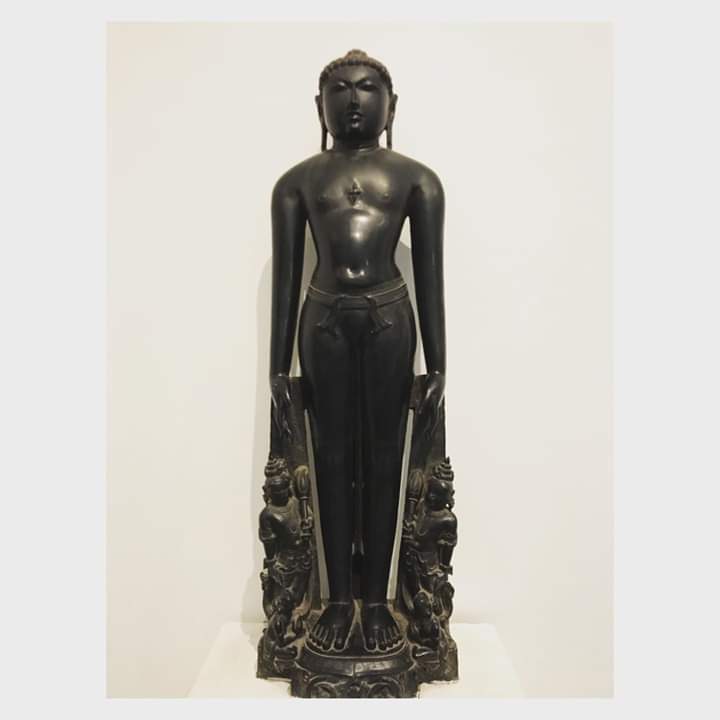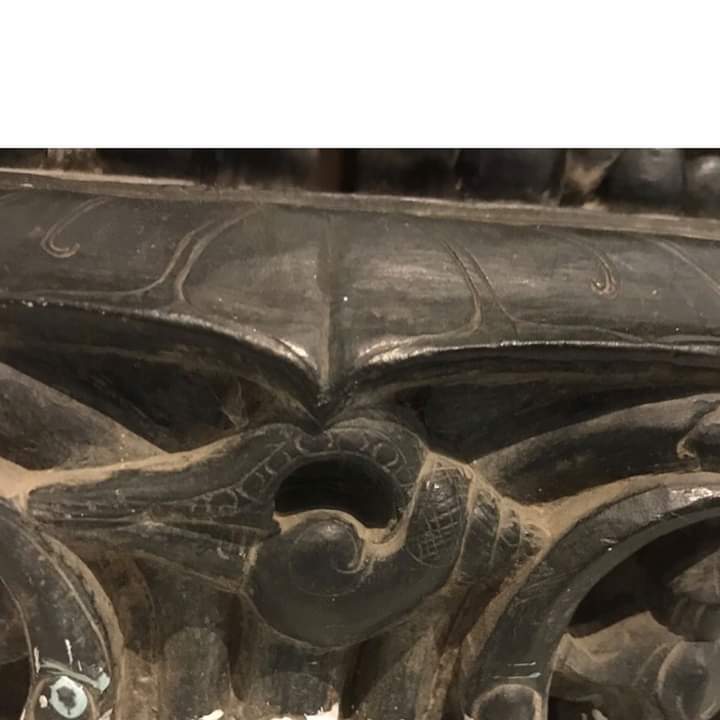Neminatha.
Jain art is dedicated to an important religious tradition that follows the teachings of the Jinas also known as tirthankaras.
.
In Jain cosmology, 24 Jinas have existed to date.They show the way to escape lifetimes of suffering and misery, ....
Jain art is dedicated to an important religious tradition that follows the teachings of the Jinas also known as tirthankaras.
.
In Jain cosmology, 24 Jinas have existed to date.They show the way to escape lifetimes of suffering and misery, ....

and offer a path of liberation from the continuous worldly cycle of birth, death and rebirth
Jina images appear to be identical, although with subtle iconographic codes they can be identified.
Jina images appear to be identical, although with subtle iconographic codes they can be identified.

@arpita_pedia @IndiaArtHistory @LostTemple7 @kamlesm For example, at the centre of this Jina’s image we see the conch shell, an attribute exclusively associated with Neminatha
Neminatha’s name is taken from the word ‘Nemi’, which means the rim of a wheel, one his mother dreamt of when she was pregnant.
Neminatha’s name is taken from the word ‘Nemi’, which means the rim of a wheel, one his mother dreamt of when she was pregnant.

@arpita_pedia @IndiaArtHistory @LostTemple7 @kamlesm @getmesomelatte @Go_Movie_Mango The base he stands on here is shaped like a wheel and is representative of the wheel of true law. This image of Neminatha has been made from black stone, and dates back to around the 12th century. The sacred knot, the srivatsa, is carved on the centre of his broad chest..... 

@arpita_pedia @IndiaArtHistory @LostTemple7 @kamlesm @getmesomelatte @Go_Movie_Mango ..and he’s flanked by two attendants bearing flywhisks. The two smaller figures shown reverently kneeling below, are those of the male and female donor, who likely commissioned this image for their temple. 

@arpita_pedia @IndiaArtHistory @LostTemple7 @kamlesm @getmesomelatte @Go_Movie_Mango @ZareerMasani @davidfrawleyved Neminatha wears a fine cloth wrap, indicating this sculpture was made for the Svetambra sect of Jainism. Many Jain images are sky clad, or naked, indicating they belong to the Digambra sect.
@threader_app compile
@threadreaderapp unroll
@threader_app compile
@threadreaderapp unroll

• • •
Missing some Tweet in this thread? You can try to
force a refresh



















